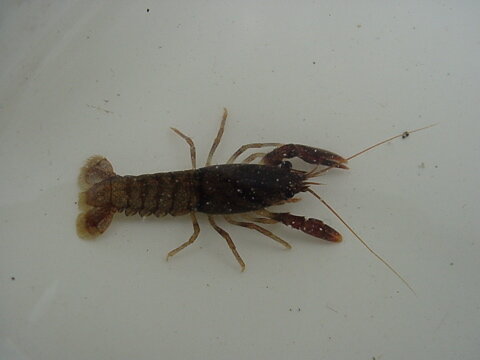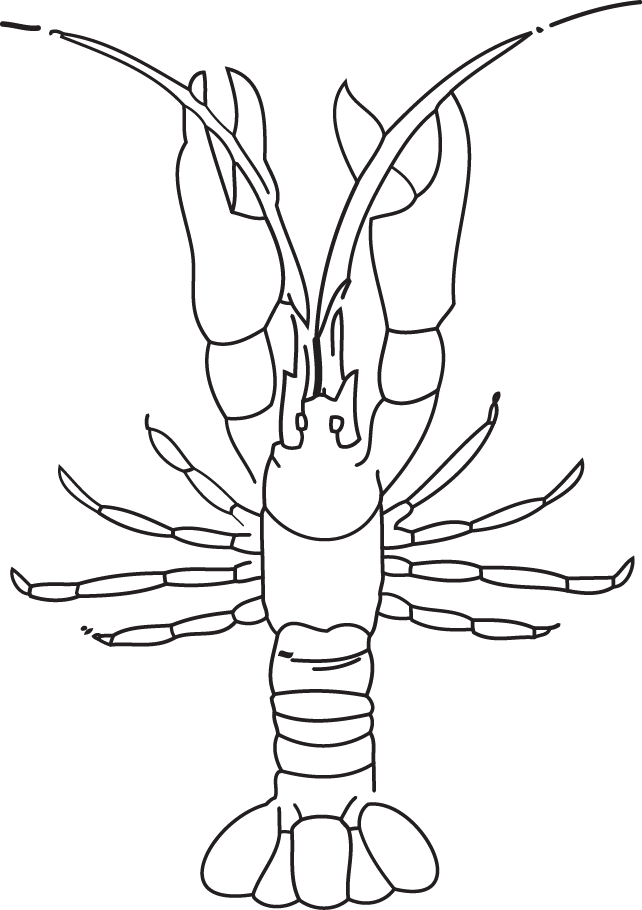Crayfish
See how they move!
SCIENTIFIC NAME: Decapoda
Number Of Species/Distribution
There are over 500 species of crayfish
Half of the known species occur in North America.
They can be found in East Asia, Europe, New Zealand, and throughout the world.
Diet/Feeding
Crayfish can eat both plant and animal matter, which makes them omnivores.
They feed mainly on fresh vegetation, along with living and non-living invertebrates, such as insects and snails.
They also eat dead and decaying matter.
They may even feed on other crayfish that are still soft from having shed their outer layer.
Habitat
Crayfish in Ontario tend to commonly inhabit lake and stream freshwater ecosystems.
They like to stay hidden among aquatic vegetation, in muddy waters, beneath rocks, or in burrows within the sediment.
They are most likely to be found along rocky or weedy shorelines in water less than 2 meters in depth, though they can live in water as deep as 30 m.
Most crayfish live in freshwater, although a few species are known to survive in marine environments
CRAYFISH: INTERESTING FACTS
Crayfish dig burrows in the substrate using their claws and tail to remove mud and carry it up to the surface. Some use the mud to create a chimney (up to 12cm high) at the burrow entrance to protect it from terrestrial predators, such as snakes.
Freshwater crayfish can be anywhere from 4 to 16 cm in length.
Male juvenile crayfish shed their exoskeleton (called molting) and become their sexual form, which has larger claws, a longer body, sharper spines, and a tougher exoskeleton. Being larger and tougher helps them battle other males during mating season. Once mating season is over, however, they molt again, after which they resemble juvenile crayfish once more.
For self-defense, when crayfish are agitated or their legs are grabbed, the legs may break at a certain point (called the breaking point). If this occurs, the leg can be regenerated later.
Life Cycle
Reproduction of crayfish is sexual between a male and female crayfish.
Reproduction usually happens in the spring.
Sexual maturity is reached when crayfish are between five and eight years old.
During mating, the male deposits the sperm and guides it into the sperm receptacle of the female.
The Lifespan of the crayfish begins with a very long attachment to the mother
After fertilization, the eggs remain attached to the mother's swimming appendages (called pleopods) for anywhere from two to twenty weeks.
Newly hatched young remain attached to the mother for several days more through a stalk. They shed their outer layer (called moulting), and lose their stalked connection with their mother. Still, they remain attached by clinging to her for up to two weeks. They eventually leave the mother temporarily, and eventually leave permanently.
Maturity is reached after they have shed their outer layer six to ten times.
Upon leaving the mother, they begin their adult life.
Role in Food Chain
Crayfish play an important role as both predator and prey.
Crayfish are prey for different types of fish including trout and bass, for aquatic mammals, waterfowl and other birds.
When young, they may also be preyed upon by other invertebrates.
Crayfish are also eaten by humans! In France they are called Écrevisses and are cooked like lobsters.
Sources
Canada's Aquatic Environments (2002). Decapoda. Available here.
Mackers (2010). Crayfish Corner.
McMaster University (2010). Crayfish.
Waterwatch South Australia, Environmental Protection Authority (2006). Crustaceans.




